2016 Chevrolet Camaro Review

The Chevrolet Camaro has been completely redesigned for 2016 and when the folks at GM say this muscle car is brand new, they truly mean it.
Aside from the name and retro-inspired styling, only two parts carry over from its predecessor, the rear bow-tie badge and SS emblems on V8-powered models. That’s it.
Smaller, leaner, faster and more capable, Chevy’s latest performance car is like an athlete that’s spent years in training and is finally ready to join the U.S. Olympic team. It may resemble the outgoing model in basic form, but it’s all new, and in practically every case, better for 2016.
FAST FACTS
| Engine: | 3.6-liter V6, 335 horsepower, 284 lb-ft |
| Transmission: | Six-speed manual, eight-speed automatic |
| Fuel Economy: | 18 miles per gallon city, 27 highway, 21 MPG combined |
| Price: | As tested $31,920 |
Alpha Dog
The Cadillac ATS is one of my favorite small luxury cars. Available as a sedan, coupe or V-Series model, this welterweight wonder is a red-white-and-blue foil to German legends like the BMW 3 Series and Mercedes-Benz C-Class.
And its excellence isn’t merely sprinkled on top like some fancy garnish, it’s baked right in. GM’s compact Alpha platform is the underlying structure that gives this Caddy its excellent manners and these same bones support the new Camaro, well, almost.
The Chevy’s architecture is about 70 percent unique, but that doesn’t mean engineers forgot what they learned while developing the ATS. This sixth-generation Camaro is 28 percent stiffer than its predecessor and significantly lighter. The body-in-white alone lost 133 pounds.
But that wasn’t good enough. Excess grams were trimmed everywhere and the results are impressive. Overall, the 2016 Camaro is at least 200 pounds lighter than the outgoing model, though depending on trim, certain variants lost nearly twice that much.
Aside from ruthless optimization, another reason this car is so much trimmer than before is that it’s physically smaller. Overall, it’s around 2.5 inches shorter, its haunches are nearly 1 inch narrower, and it sits more than an inch closer to the ground. Even its wheelbase has been truncated by more than an inch and a half.
Horse Tranquilizer
These dimensional changes make the Camaro an ideal rival to a certain unnamed ponycar from Dearborn. The primary dimensions of these classic adversaries are within spittin’ distance of each other and, oddly enough, they’re are exactly the same length at 188.3 inches, which is just weird.
But if that’s not enough, their powertrain lineups are creepy doppelgängers. Like its equine opponent, the Camaro offers a turbocharged four-cylinder engine, a potent V6, and a range-topping V8.
Serving base duty is a 2.0-liter ‘banger, but its output is anything but entry level. It delivers a surprising 275 horsepower and 295 lb-ft of torque, numbers that would have been impressive for a V8 just a decade and a half ago. Likewise, the acceleration this engine provides should make even the most ardent big-block enthusiast take notice. It can get you to 60 miles an hour in the mid five-second range.
One tread up the powertrain staircase is a 3.6-liter V6, which is sort of the middle manager of this company. It puts out a remarkable 335 ponies with 284 lb-ft of twist. Bolstering efficiency, it also features cylinder deactivation, which shuts down two pots during light-load driving for enhanced fuel economy. Despite sipping fuel, 60 miles an hour can be yours in the low five-second range.
But the engine you probably want – or at least the one that seems the most appropriate in this Detroit dominator – has two banks of four-cylinders. SS variants of the Camaro are propelled by a 6.2-liter LT1 V8 borrowed from the Corvette Stingray. It puts out a muscular 455 horsepower and an identical amount of torque. This unit can deliver mile-a-minute velocity in four seconds flat.
Maximizing choice, all three engines are available with either a six-speed manual transmission or an eight-ratio auto-box. The Camaro LT we evaluated over an extensive road trip was equipped with the V6 engine and a manual transmission. As for consumption, it stickers at 18 miles per gallon around town, a number that swells to 27 during highway jaunts. Combined, this car should return an average of 21 mpg.
Features and Amenities
Despite being transformed by a ground-up redesign, the 2016 Camaro still looks like its predecessor, with get-out-of-my-way-before-I-rip-your-face-off-and-use-it-as-a-chamois exterior design. Scowling headlamps, a gaping lower grille and broad rear fenders are all accounted for and rendered with greater sophistication. It’s one fine-looking automobile with stunning proportions.
Like its stylish body, this modern-day muscle car’s interior also has a familiar look and feel, which is something of a double-edged sword. On the plus side, it’s stylish and well laid out. The controls are easy to use and it offers quite a lot of technology. Apple CarPlay is available, which makes it a snap to safely use your iPhone while driving. Also, the flat-bottom steering wheel is meaty and the instruments are legible enough for Stevie Wonder to read.
One of my favorite parts of the Camaro’s interior is its climate control system. The temperature and fan-speed knobs are integrated into trim rings surrounding the lower air vents, which is a brilliant touch. They work well and help clean up the center stack.
But there are a number of unexpected downsides to the Camaro’s cockpit, and its most egregious fault is visibility. Sight lines remain catastrophically bad; Hitler probably had a better view of the outside world sitting in his Führer bunker, and it was underground. The claustrophobia the car’s cramped cabin engenders is just so offputting.
The Camaro’s windshield is limited and provides all the visibility of a main battle tank’s view port; beyond this, the car’s backlight is even smaller. Its side glass stops at shoulder level, which further limits visibility and makes resting your elbow on the top of the doors uncomfortable. And then there are the C-pillars, which are about two feet across and annihilate rearward vision at oblique angles. Fortunately, a backup camera is standard.
Since visibility is such a precious commodity, it’s difficult to get your bearings while driving the Camaro. You’re never really sure where its corners are or how far the front bumper extends. While maneuvering around town, you constantly ask yourself questions like, “Am I going to hit that parking curb?” and, “As I turn, will I clear that pickup truck three spaces over?”
And if all of this wasn’t enough, the car’s trunk opening is also tiny and its back seat unusably small. The cloth-covered front buckets in the V6-powered LT1 we sampled weren’t particularly comfortable or well bolstered, plus they don’t recline very far, so if you ever wanted to put the seat back and take a nap while parked, that’s off the table.
Fun Trick Pony(car)
But enough griping! The Camaro looks great and drives even better. Thanks to its Cadillac origins, this ponycar is nimble, quick and despite having “just” a V6 engine, it sounds great, especially as the tachometer needle sweeps toward seven grand. Oh, and if you’re curious, it’s plenty fast as well.
GM’s totally redesigned 3.6-liter engine is incredibly smooth and responsive. It’s as silky feeling as any V6 from any other automaker in the world, it’s really that refined. Helping it snarl at high revs is a dual-mode exhaust system, a technology shared with SS models. To eliminate unwanted thrumming, four-cylinder cars feature active noise cancellation instead.
Like its sophisticated engine, the new Camaro’s steering is superb, with ideal weighting and zero slack or deadness on center. It’s the same story with the brakes, which are tight and easy to modulate.
Burnishing the SS model’s appeal, magnetic ride control is available, which adjusts shock-absorber damping 1,000 times per second to deliver an unbeatable combination of performance and smoothness.
Unfortunately, the last remaining major interface point in this vehicle is only so-so. The V6 car’s shifter feels gritty and crude, not slick and fluid like rival gearboxes, notably the one in the Mustang … I mean a certain rival ponycar. On multiple occasions, I inadvertently grabbed the wrong gear, which is never a good thing. Luckily the clutch is light and easy to modulate.
The Verdict: 2016 Chevrolet Camaro Review
If it’s not available right now, but the 2016 Chevy Camaro should be arriving at dealerships very soon. You can pick up an LT-trim car with the 2.0-liter turbo for less than $27,000, including $995 in shipping. An SS model with a brawny V8 engine can be yours for a little more than 37 grand. Spanning that gulf, the six-cylinder model I’ve been driving cost $31,920 out the door.
I love the way this new Camaro looks, how it drives and even the way it sounds. In practically every way, this car is a tremendous upgrade over the outgoing model. However, its cramped interior and unbelievably obscured outward visibility make a tough sell.
Discuss this story on our Camaro Forum
LOVE IT
- Phenomenal driving dynamics
- V6 engine is fast and refined
- Surprisingly fuel efficient
- Gorgeous styling
LEAVE IT
- Cramped, uncomfortable interior
- Insufferable outward visibility
- Uncooperative shifter

Born and raised in metro Detroit, Craig was steeped in mechanics from childhood. He feels as much at home with a wrench or welding gun in his hand as he does behind the wheel or in front of a camera. Putting his Bachelor's Degree in Journalism to good use, he's always pumping out videos, reviews, and features for AutoGuide.com. When the workday is over, he can be found out driving his fully restored 1936 Ford V8 sedan. Craig has covered the automotive industry full time for more than 10 years and is a member of the Automotive Press Association (APA) and Midwest Automotive Media Association (MAMA).
More by Craig Cole





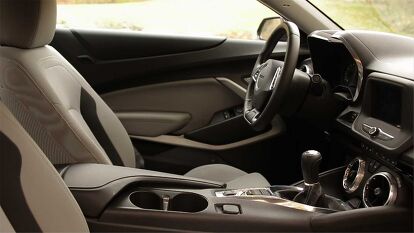


















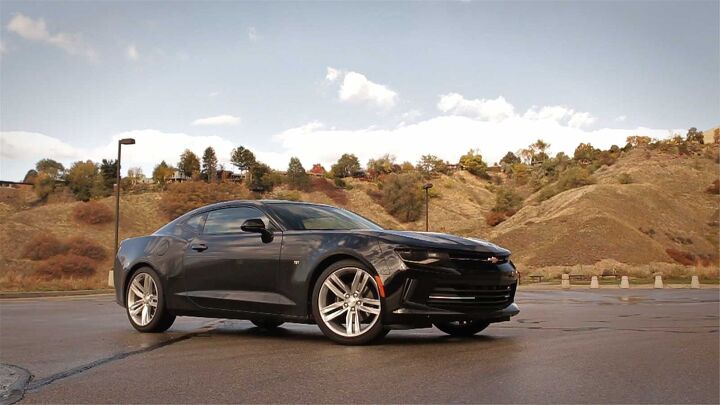




















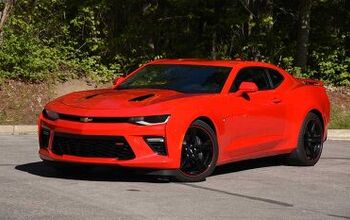
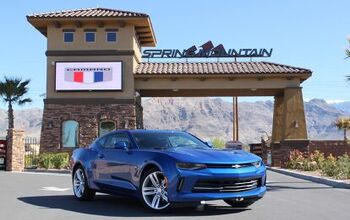








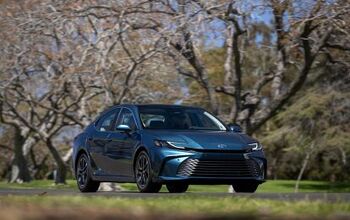


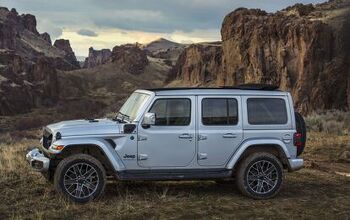
Comments
Join the conversation
I just drove an SS yesterday at the dealer....the writer is FOS. Outward visability is equal if not better than the Gen 5. The rear is about the same. And the backseat is about the same except maybe an inch narrower in width. I know, I have had a Gen 5 since 2011 as my daily driver. Hopped out of my Gen 5 into the Gen6 for the test drive then right back in my Gen 5.
Craig Cole provided an honest and factual video that I really enjoyed. I test drove a new Camaro on Saturday and found it to be seriously cramped feeling with terrible visibility. No not terrible, rather dangerously restricted visibility. I could not even put my elbow out the window due to the too high beltline. Bummer! I had hope hope for the new Camaro, but it is not the car for me.